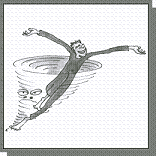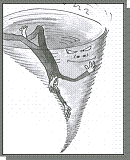Automatic Negative Thoughts (ANTs) are the spontaneous negative thoughts we have in response to unpleasant experiences, events or triggers. Our automatic negative thoughts have a big impact on our moods and how we feel. To learn more about ANTs, please watch the video below.
Automatic Negative Thoughts and CBT
Please watch the related videos below, and for more videos like these, subscribe to my YouTube Channel.

 In a previous post, we looked at the cognitive behavioural therapy (CBT) model of the
In a previous post, we looked at the cognitive behavioural therapy (CBT) model of the  In the cognitive behavioural therapy (CBT) model of depression, one of the reasons that breaking out of depression can be so difficult is that depression generates vicious cycles involving a number of aspects of our lives. Once we get stuck in these vicious cycles, they can be hard to break.
In the cognitive behavioural therapy (CBT) model of depression, one of the reasons that breaking out of depression can be so difficult is that depression generates vicious cycles involving a number of aspects of our lives. Once we get stuck in these vicious cycles, they can be hard to break.